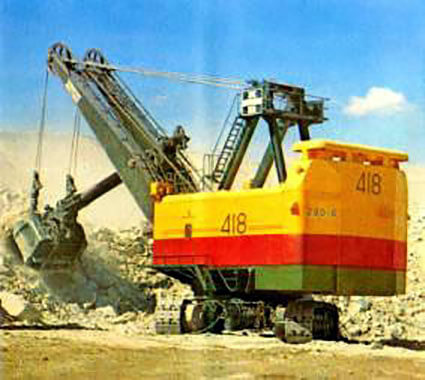1970
Since this era, the focus of domestic demand gradually started shifting from bulldozers to hydraulic shovels. Additional considerations, such as ease of operation, also became an important aspect of design.

While production of the hydraulic shovel was leading the industry, the demand for super sized electric excavators for mining was also rising, and Komatsu tied up with Bucyrus once again.
Komatsu and Bucyrus produced and shipped 17 super sized shovels to iron mines in Canada and copper mines in Chile.
Weight: 450000kg
Hydraulic excavator
Since its first emergence in 1951, it took only 50 years for the hydraulic shovel to establish its primary position on construction sites worldwide. Its size ranges from mini to super size depending on the scale of construction, and during the half century, it kept evolving by achieving a minimum rear-swing radius and adapting styles that would work with characteristics of each site. Mirroring the movement of a human hand, a hydraulic shovel will continue to evolve during the 21st century.